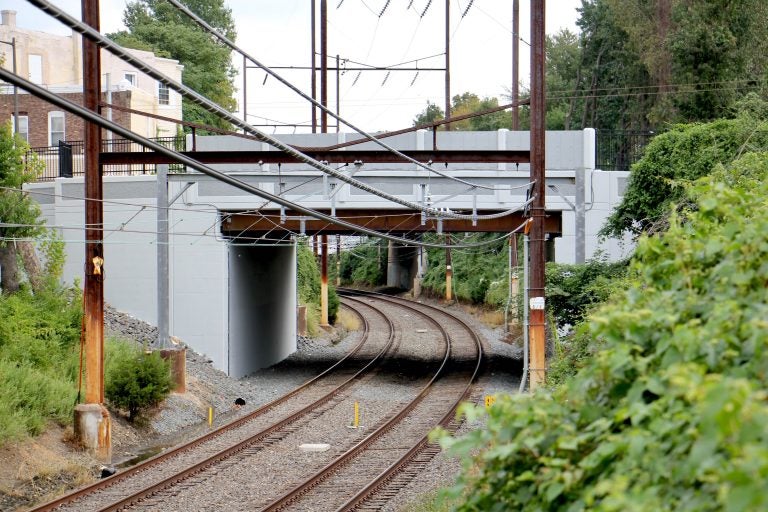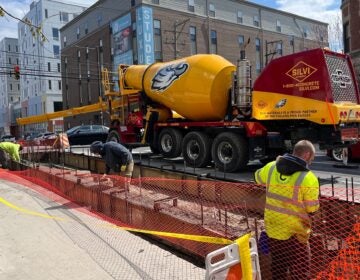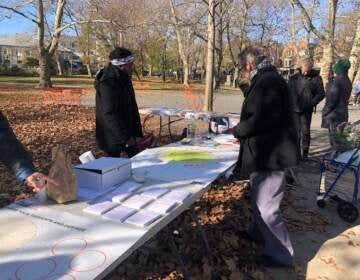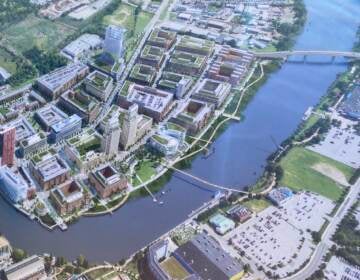This West Philly bridge got a makeover for its 99th birthday
The bridge was first constructed in 1920. A structural evaluation in 2017 called it “basically intolerable.” Here’s what changed.

SEPTA and the city have just finished a $7.3 million rebuild of the Woodland Avenue Bridge, first constructed in 1920. (Emma Lee/WHYY)
The Woodland Avenue Bridge is turning 99 this year and it’s approaching the milestone with a complete makeover.
Continuously welded track, to reduce sound. Insulated rubber casing for the new rail, to reduce vibration. New pavement, to make rides smoother and crossings less disruptive. Plus, reconstructed street and sidewalk elements.
All of this came as part of a $7.3 million rebuild that officially wrapped Monday.
It’s about time, too. When the West Philadelphia bridge was constructed in 1920, it saw considerably less traffic than it does today. Between 1990 and 2010, daily vehicular traffic went from 1,500 to an estimated 30,000.
In 2017, official inspections declared the bridge structurally deficient, noting that the structure at the time was “basically intolerable, requiring high priority of corrective action or replacement.” SEPTA announced its complete replacement last year, in partnership with the City of Philadelphia and PennDOT.
Street closures for the construction began in March 2018. In total, the redesign and rebuild took more than a year with a mix of federal, local and state resources funding the work. During construction this summer, streets were closed off and trolley routes 11 and 36 (which run across the bridge between 47th and 48th ) were redirected along Chester Avenue.
Residents weren’t entirely happy about the closures, even if it was toward a worthwhile end. The bridge regularly carries cars, bikes, pedestrians, and SEPTA trolleys over the Media/Elwyn Regional Rail line, meaning it’s a critical crossing for many commuters.
But it also runs along Woodland Avenue, which is in Philly’s Vision Zero High Injury Network — meaning that it’s one of the riskiest streets in the city for traffic-related danger.
City officials are hopeful. They think the new replacement will make Woodland Avenue Bridge both safer and smarter.
“With cars, pedestrians, bikes, trolleys and trains traveling on or below the Woodland Avenue Bridge every day, replacing this nearly 100-year old bridge was a high priority for the City of Philadelphia,” said Mayor Jim Kenney in a statement Monday.
Fingers crossed that this model lasts us another century.
WHYY is your source for fact-based, in-depth journalism and information. As a nonprofit organization, we rely on financial support from readers like you. Please give today.







